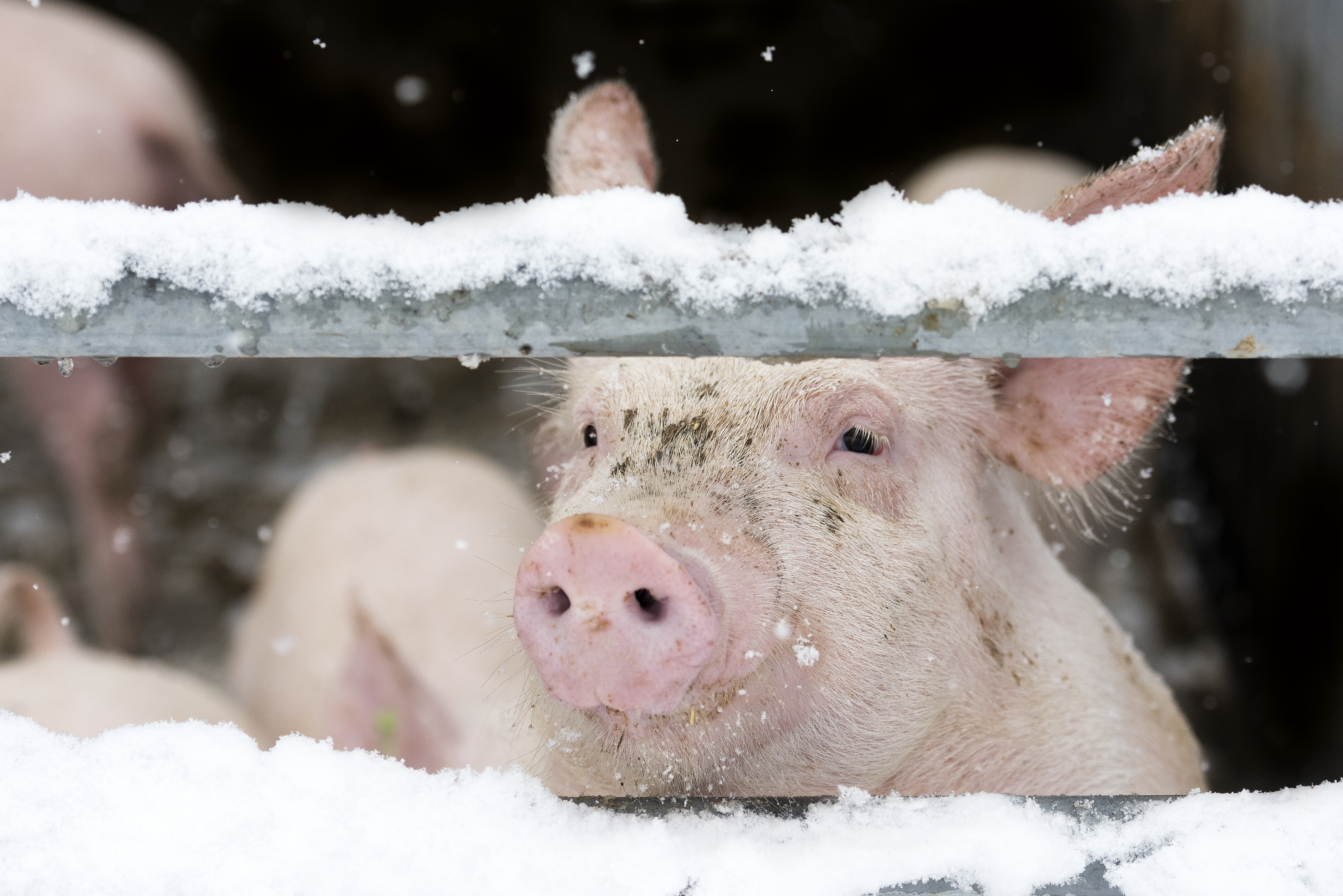



Pigs in blankets: how to keep your pigs warm in winter
For the smallholder or small-scale producer who doesn’t farm pigs on an industrial scale, keeping pigs through the winter can be a daunting prospect writes Dan Turner for The Pig Site.During spring and summer they can be kept outside indefinitely. The weather is good, the conditions are (even in Britain) pleasant, and there aren't any environmental factors contributing to the incubation or spread of diseases.
This, however, changes as soon as autumn sets in, especially when you take into consideration the susceptibility that many pig breeds have to pneumonia and respiratory diseases. So, for those keeping pigs through the winter months, what do you need to consider to keep your pigs warm and healthy as the cold snap begins? The Pig Site provides plenty of information on this topic so should you not find what you're looking for here or you're just keen to learn more, visit our How to keep your pigs warm in winter series.
Keeping pigs inside
Firstly, you must make the choice between keeping your pigs outside, or moving them inside for protection from the elements. If you are considering moving your pigs inside they will obviously be better protected from the weather. It's easier to control the conditions they live in with an indoor environment.

However, if you are considering this, it is important to make sure they have access to an outdoor area for their waste, and for exercise. In winter your pigs will need to eat more feed in order to stay warm, but it is also important to allow them access to a run or similar area. This will allow you to make sure they do not run to fat from lack of movement - it may be a popular belief, but a fat pig is not actually a happy pig.
If you've moved your pigs indoors, provided a fresh source of water in their new home as well as access to an outdoor exercise run, then you have the makings of happy, warm, winter pigs. But this approach will necessitate a great deal more mucking out over the months they are inside. Routinely changing the hay and bedding in the area will not only make sure it keeps the pigs warm, but also ensures they are clean and healthy.
You can place used bedding by the entrance so that mud gets trapped there, and isn’t tracked into the sleeping area. This can also be done if you are leaving the pigs in their arc for the winter, but special attention should be paid in this case. The extra bedding works very well as insulation in the winter, but care should be taken not to over-insulate. Two or three adult pigs will generate enough body heat to keep an arc warm without too much extra help.
Keeping pigs outside
If you are planning to leave your pigs outside for the winter there are things you can do to ensure they are warm and well. Placing a sack-cloth, or similar, door over the entrance is a must in the winter. This can be lowered over the entrance way at night, and will prevent loss of heat or drafts. This is key to ensuring your pigs don't catch pneumonia in the winter months.
Raising your arc off the ground on railway sleepers, or similar again, is also a good idea. This will prevent groundwater from seeping in, and keep the bedding dry and clean. If your arc is made from treated wood or boards it's also a good idea to ensure all seams are sealed properly, and the entrance is facing away from the prevailing wind. The last thing you want is for rain, sleet, or snow to blow through the doorway and into your pigs sleeping area.
These precautions are all somewhat contingent on where your arc is placed, and what kind of soil you have. If you have a heavy, clay-based soil, and have your arc at the bottom of a sloping garden or field, then you are going to have many more problems with groundwater or mud. Taking this into account is essential to keeping your pigs happy and healthy through the winter months.
These precautions should all be taken into account if you have an occupied farrow shed in the winter months as well. A heated creep area will allow you to keep closer tabs on the process. It will also mean you should see fewer losses. The piglets will require more food than you would give in the summer months in order to keep themselves warm as well as grow once they are weaned.
Making sure all areas can be lit during feeding can also be important. This is not entirely to do with keeping the pigs warm, but if you're feeding them twice a day and both are in the dark, it may adversely affect their health and sleeping rhythms. Observation during feeding time is very important in spotting pigs that are ill, or becoming ill. Changing the feeding schedule every so often, or lighting the feeding area properly, can be important in stopping the spread of disease among your pigs.
Lastly, as a smallholder, it is a good idea to research which breeds will do better in harsher conditions. Some breeds are hardier than others, especially some of the rarer ones. Gloucester Old Spots, Oxford Sandy and Blacks, and Tamworths are all hardier than more common breeds. This may seem like something you don't need to consider, especially if you are keeping the pigs indoors or you know you'll be paying special attention to their bedding, but it may be important; especially in areas which are notably colder than average such as at raised altitude, or in remote areas.
Keeping pigs through the winter months is no mean feat, and is definitely more difficult than keeping them in the milder months, but although it requires more observation and more vigilance to keep your pigs warm and healthy, it may teach you more about them than raising them in fairer weather.








